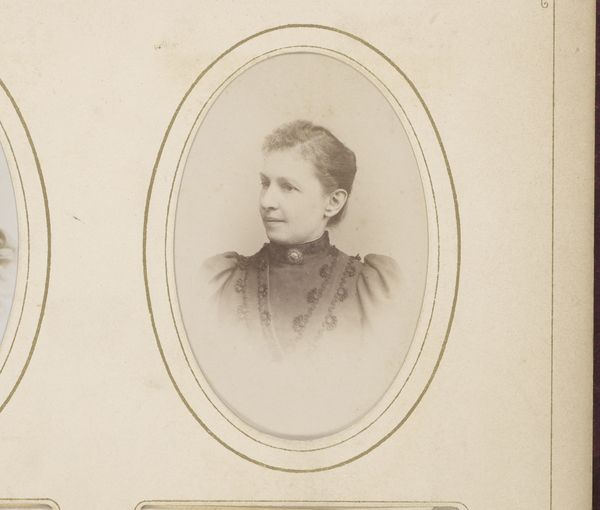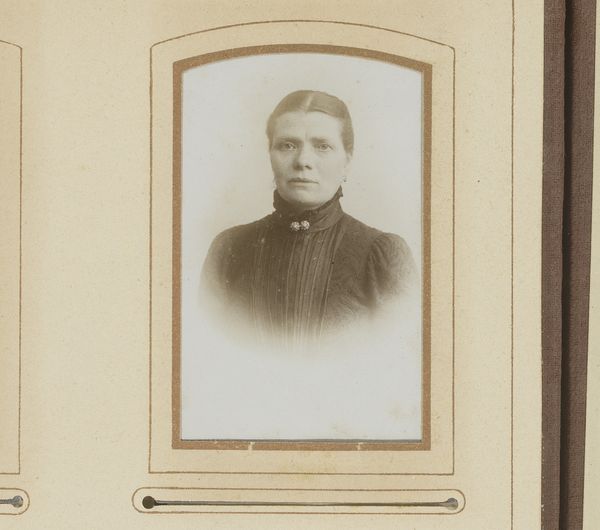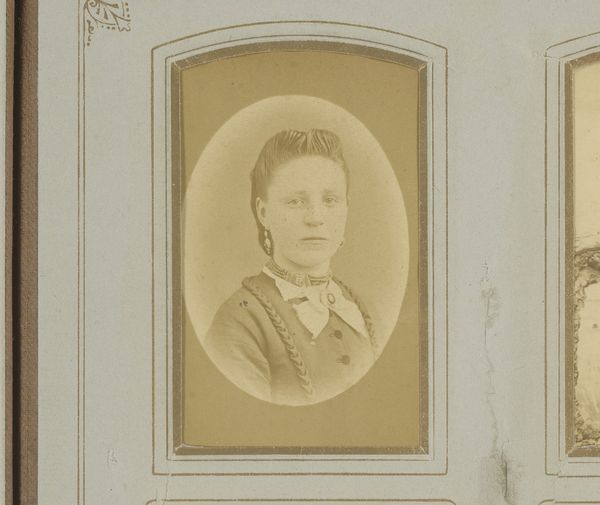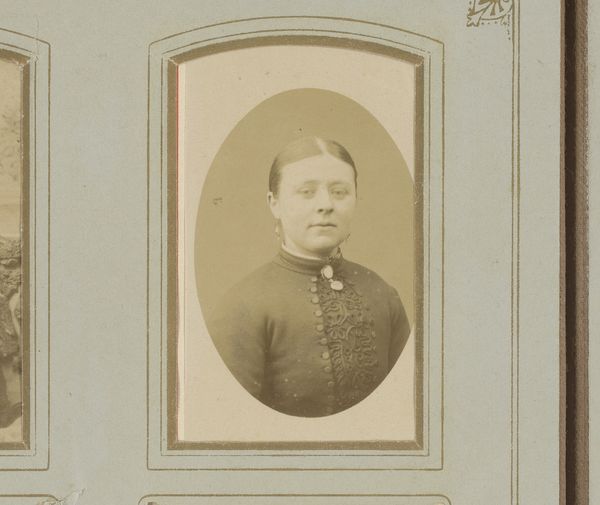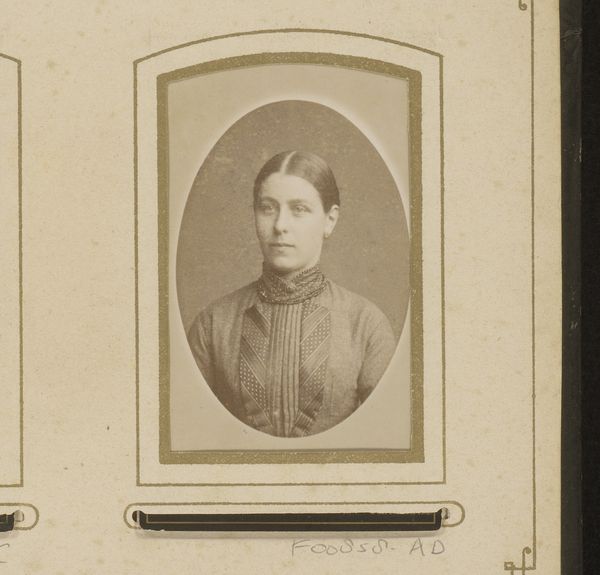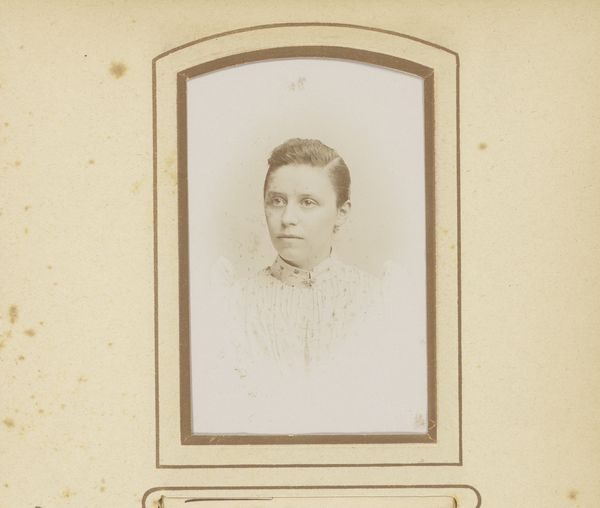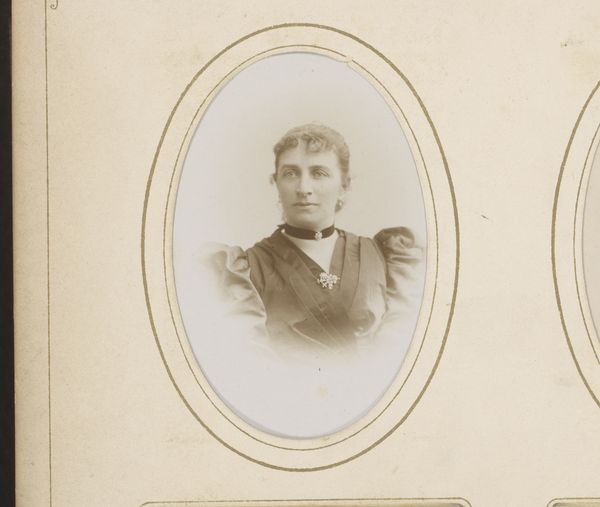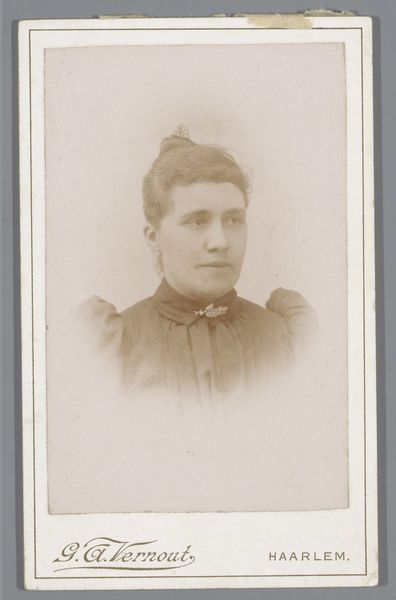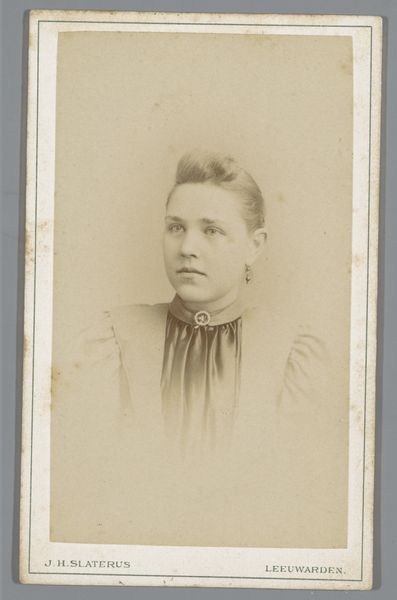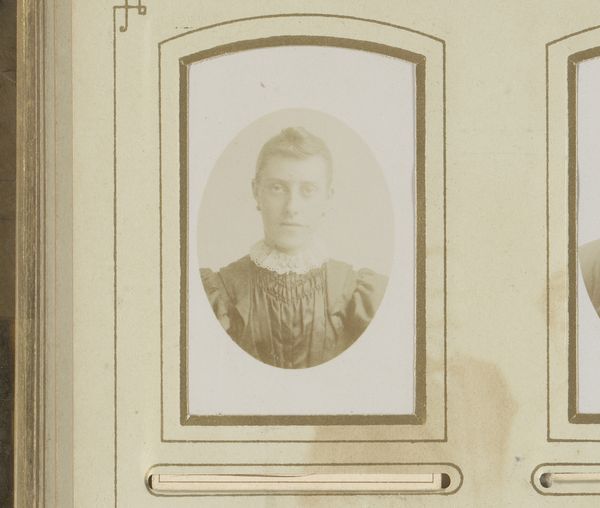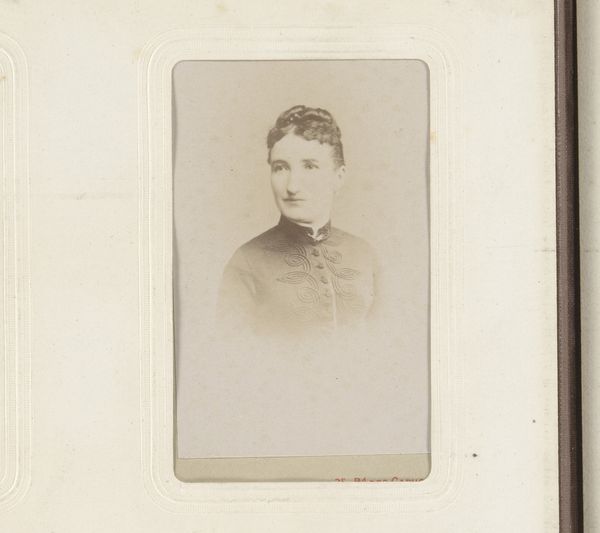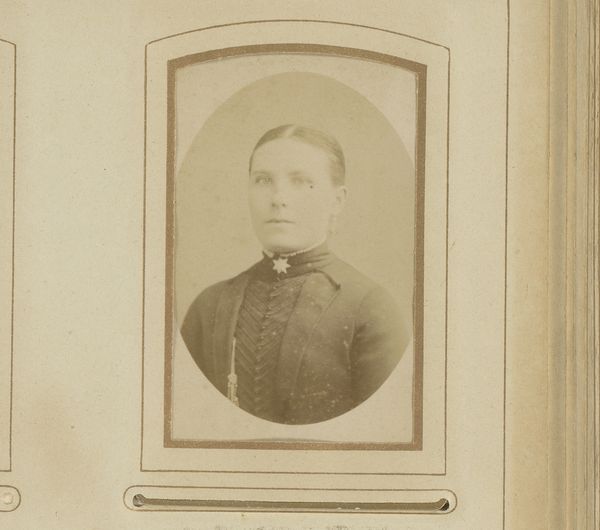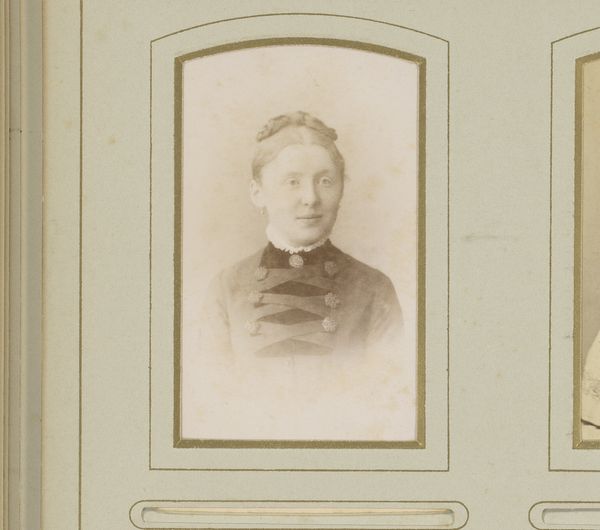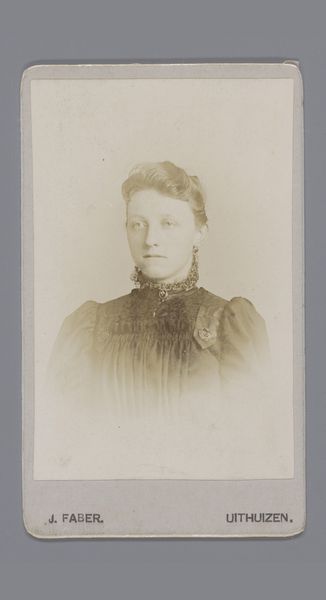
photography, albumen-print
#
portrait
#
charcoal drawing
#
photography
#
albumen-print
#
realism
Dimensions: height 82 mm, width 51 mm
Copyright: Rijks Museum: Open Domain
Curator: Here we have a work titled "Portret van een vrouw met halssieraad," which translates to "Portrait of a Woman with Necklace." It is an albumen print created sometime between 1893 and 1915 by Camillus Franciscus van der Aa. It's quite a lovely example of early photography. Editor: It’s striking how intimate and still it feels. Even though it is over a century old, the woman seems quite present. There is an interesting tension in her expression; direct, but somewhat guarded. The subdued tones add a kind of dreamlike aura to her image, almost blurring time. Curator: Albumen prints, popular during that period, gave photographers the ability to produce highly detailed images on paper from glass negatives. These prints provided a standardized way of creating and distributing portraits, affecting social norms by placing a visual emphasis on bourgeois society. Editor: You know, considering that photography was then relatively new, one can't ignore how powerfully portraits, such as these, have influenced our perception of people’s individual and collective identities across history. Her necklace draws attention to the rigidity of her collar; she appears to be restrained, like she cannot remove it. This highlights expectations regarding how women should adorn and present themselves. Curator: Exactly. It also speaks volumes about the social expectations and constructed gender roles. In a world without selfies, painted or photographic portraits played an even more central role in the construction of a personal and familial narrative. Editor: You're right, of course. Beyond aesthetics, it embodies a complex socio-cultural phenomenon. It provokes me to think about visibility, agency, and representation back then. Curator: Considering it, a modern audience is forced to grapple with the differences and continuities between our era of constant visual stimuli, and a society where photographs like this were far less commonplace, imbuing the simple portrait with power. Editor: It feels like a gateway, not just to the past, but to ongoing dialogues about how we perceive, categorize, and assign value. I feel connected with the woman and wonder about her experiences in society. Curator: It's a testament to the power of images, isn't it?
Comments
No comments
Be the first to comment and join the conversation on the ultimate creative platform.
